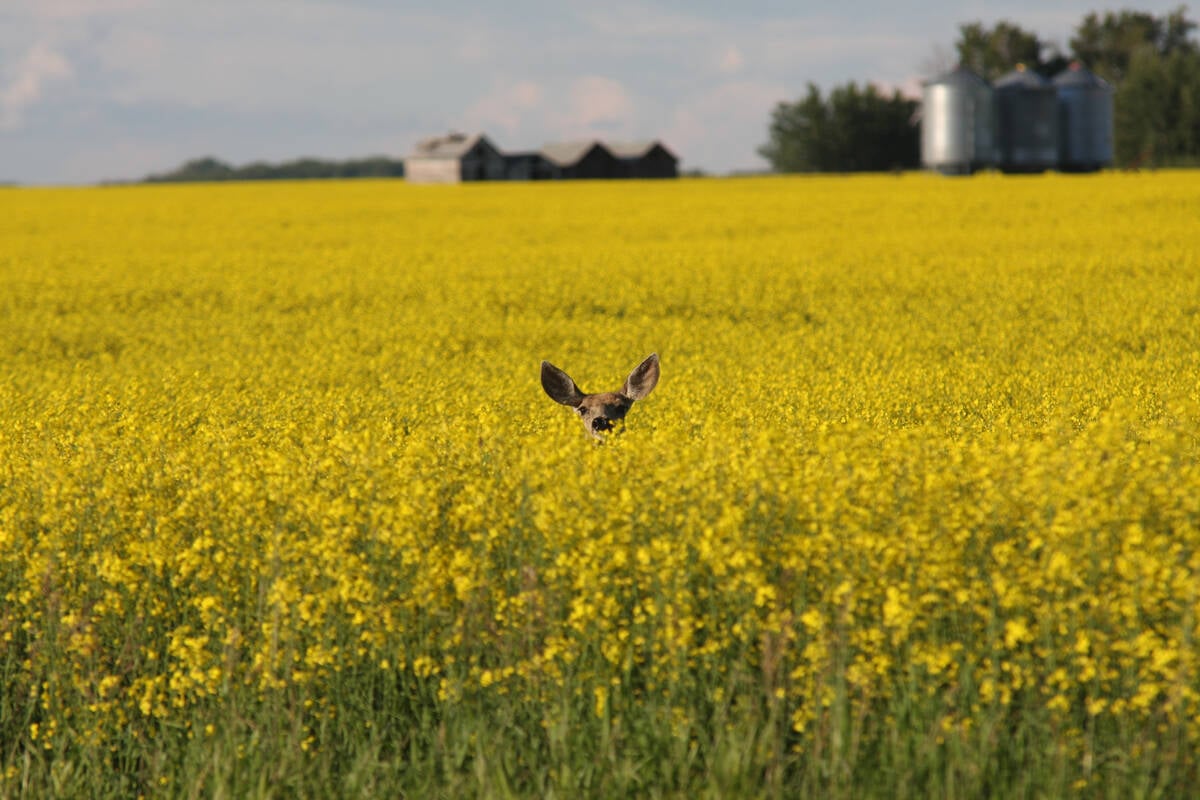Dry conditions in Alberta this year highlight the value of irrigation.
However, Erwin Braun, chair of the Alberta Irrigation Projects Association, says the irrigation system demonstrates its worth whether there is drought or flood.
“We were able to withstand this drought better than we did in 2001,” said Braun.
“We ended up the season with the reservoirs all in really good shape. No farmers couldn’t access water when they needed it and the irrigation crops all look really good, and that is a direct result of the investments made by both by irrigation districts, government and farmers.”
Read Also

Drones now used to assess wildlife crop damage in Saskatchewan
Wildlife damage in Saskatchewan crops is now assessed by drones and artificial intelligence.
A study commissioned by the AIPA, which was released Aug. 20, shows the benefits of irrigation to the provincial and national economy.
The report found that every cubic metre of water delivered for irrigation creates $3 for the Alberta economy and $2 in labour income.
The benefits to crops and food production are particularly obvious in a dry year like this one, said Braun, and government should put the same effort into drought mitigation as it is now putting into flood mitigation projects as a result of major flood damage in 2013.
“We have several opportunities already identified for enhancing off stream storage,” said Braun.
“There are still some good places where we can increase infrastructure of irrigation districts by constructing reservoirs, reservoirs that can be used to capture flows when we have high flows.”
The report said farmers and irrigation districts have improved the efficiency of water use. Braun said farmers in Alberta’s 13 irrigation districts have spent a cumulative $1 billion on irrigation equipment in the last 20 years.
Almost 68 percent of the irrigation systems are now low-pressure centre pivots, with 15.6 percent still using side-roll systems and 8.8 percent using high-pressure centre pivots. Surface systems such as flood irrigation, which are the least efficient, make up the remainder.
He said irrigation districts have replaced some canals with underground pipelines to reduce seepage and evaporation, and those efforts continue.
“We’re irrigating 20 percent more land with 20 percent less water over the past 20 years. That’s what that study shows.”
Braun said expansion of the system is possible, but it will have to come through greater efficiency.
“We plan on expanding and leaving more water in the rivers. That’s the story that we want out there, and we think that is a message that Albertans want to hear and need to hear.”
The Alberta government’s irrigation rehabilitation program covers 75 percent of costs, with irrigation districts covering the rest.
The province used to pay 86 percent of those costs, and Braun said the study indicates that the benefit to the provincial economy from irrigation, relative to farmers’ benefit, is much greater than those percentages indicate.
“Our study shows that the benefit is 90-10, so you could make an argument that (funding) should be 90-10. It’s a good news story in terms of investments.”
The 156-page study was conducted by Paterson Earth and Water Consulting of Lethbridge.
- 1.7 million acres are irrigated.
- 1.4 million acres are within 13 southern irrigation districts.
- Irrigation industry adds $3.6 billion to Alberta gross domestic product annually.
- Irrigation food sector contributes 20 percent of Alberta’s total agri-food on 4.7 percent of its cultivated land base.
- Irrigated crop and livestock production has created 38,000 jobs.
- Food processing related to irrigation has created 17,000 full-time jobs.
- Irrigation provides recreation, hydro power generation and drought mitigation.
- Efficiency improvements in last 20 years have reduced water use by 200 million cubic metres.
- Irrigated area has expanded by 74,000 acres in the last 20 years.















